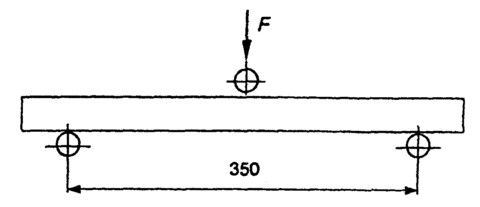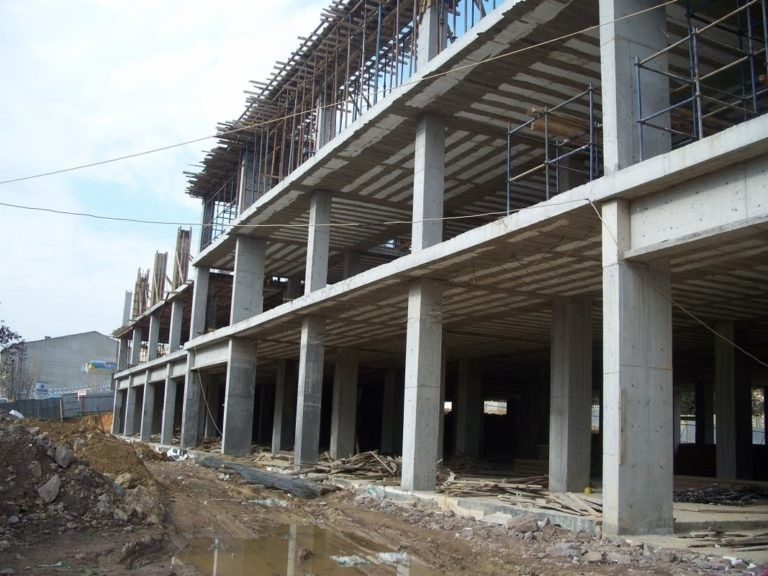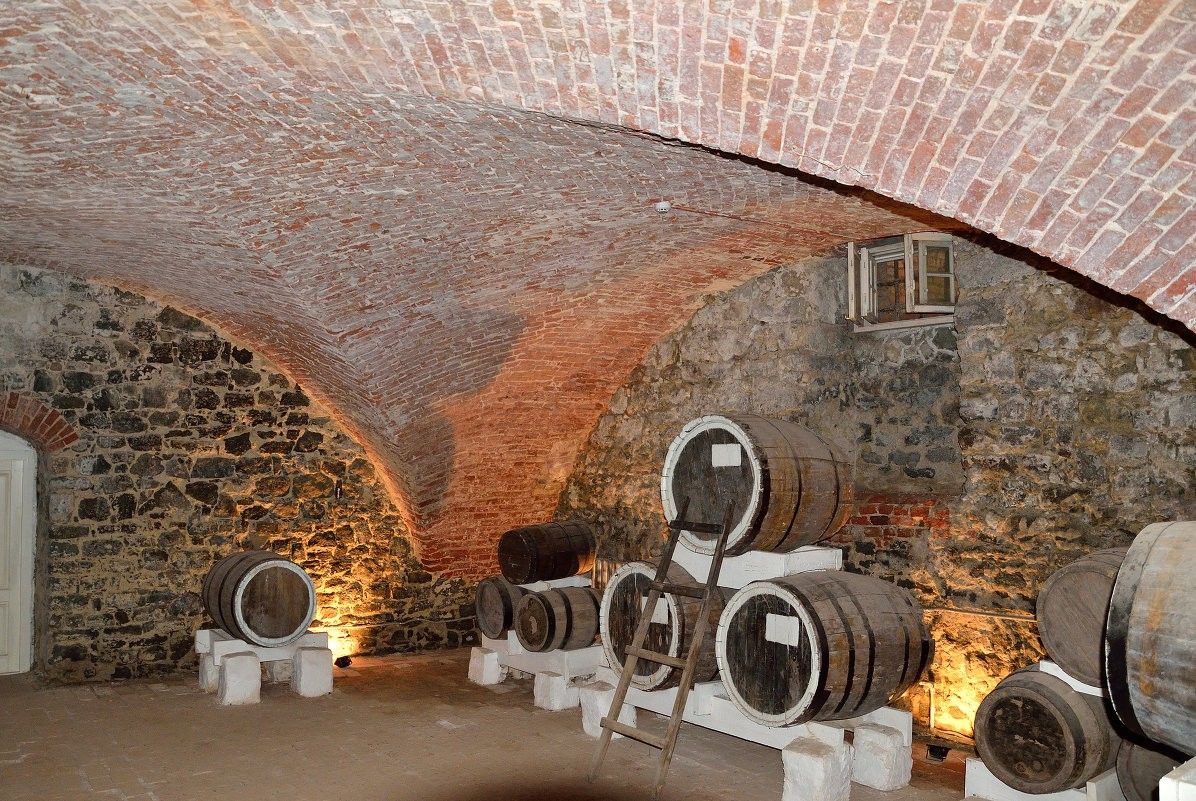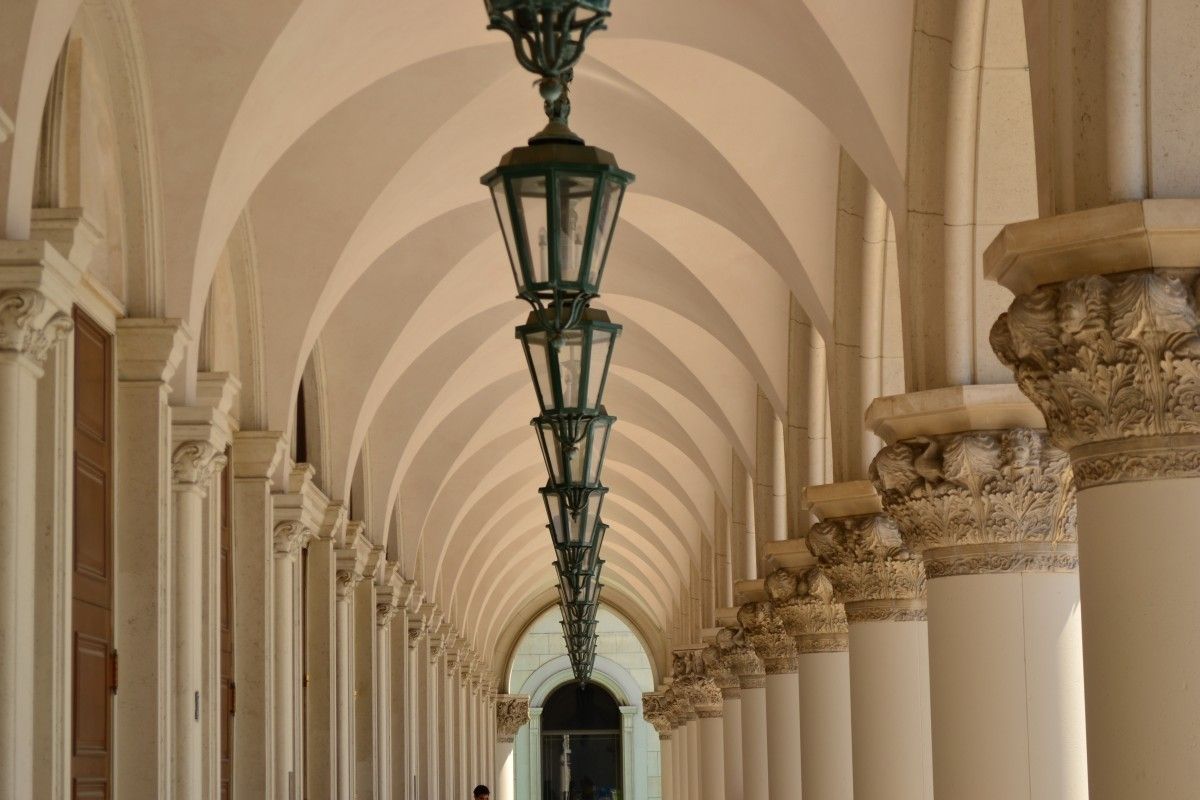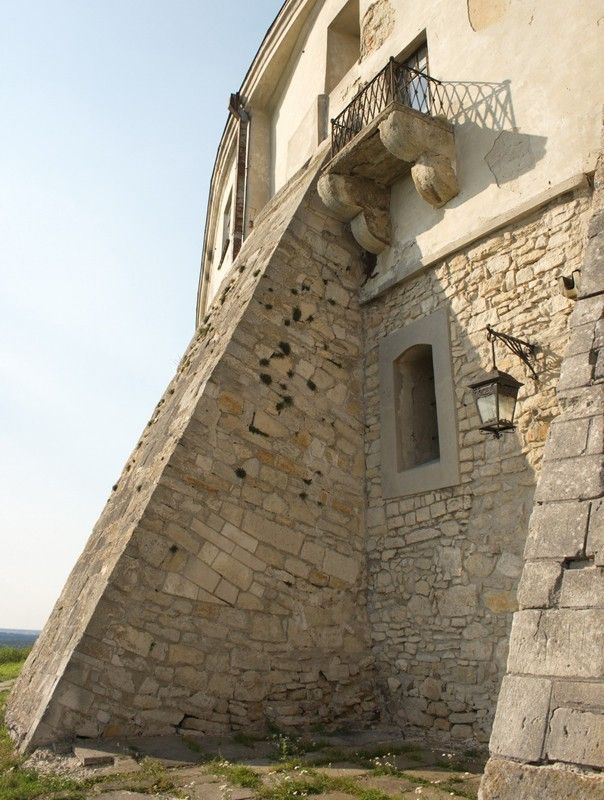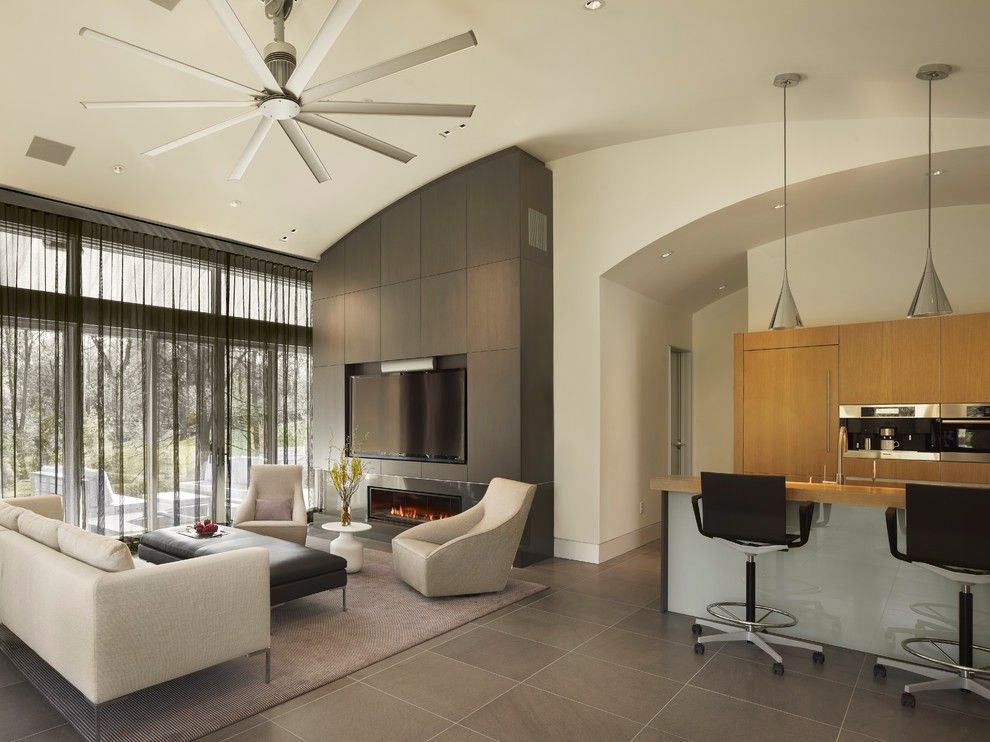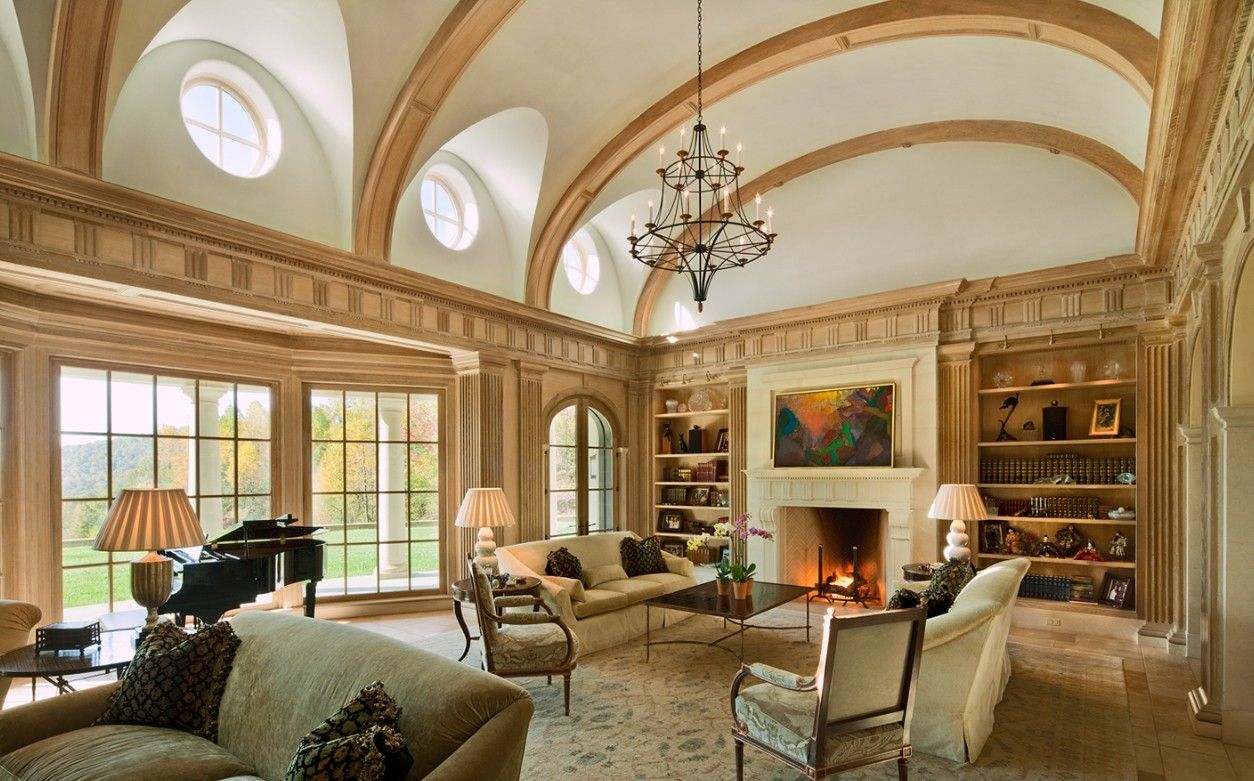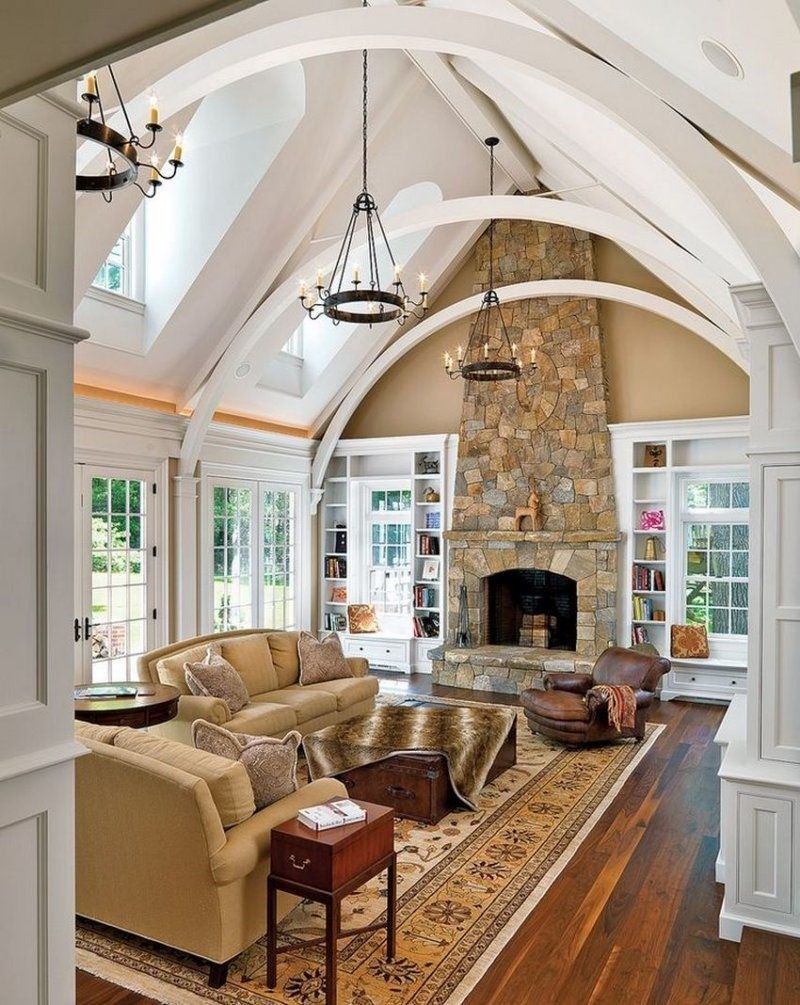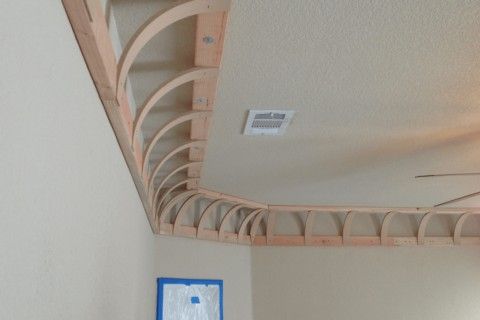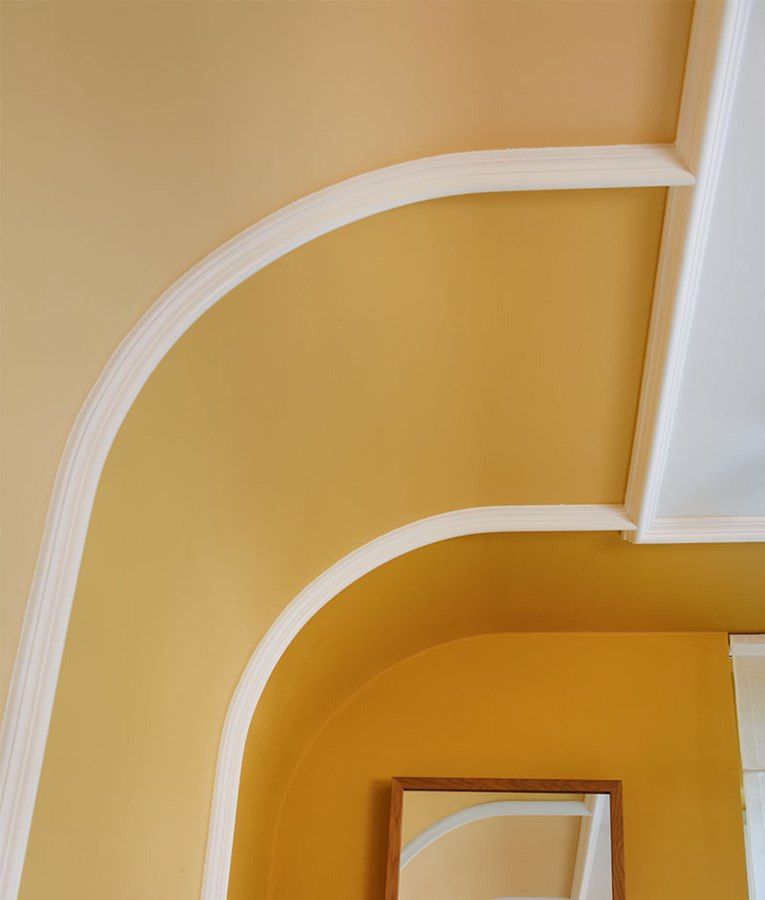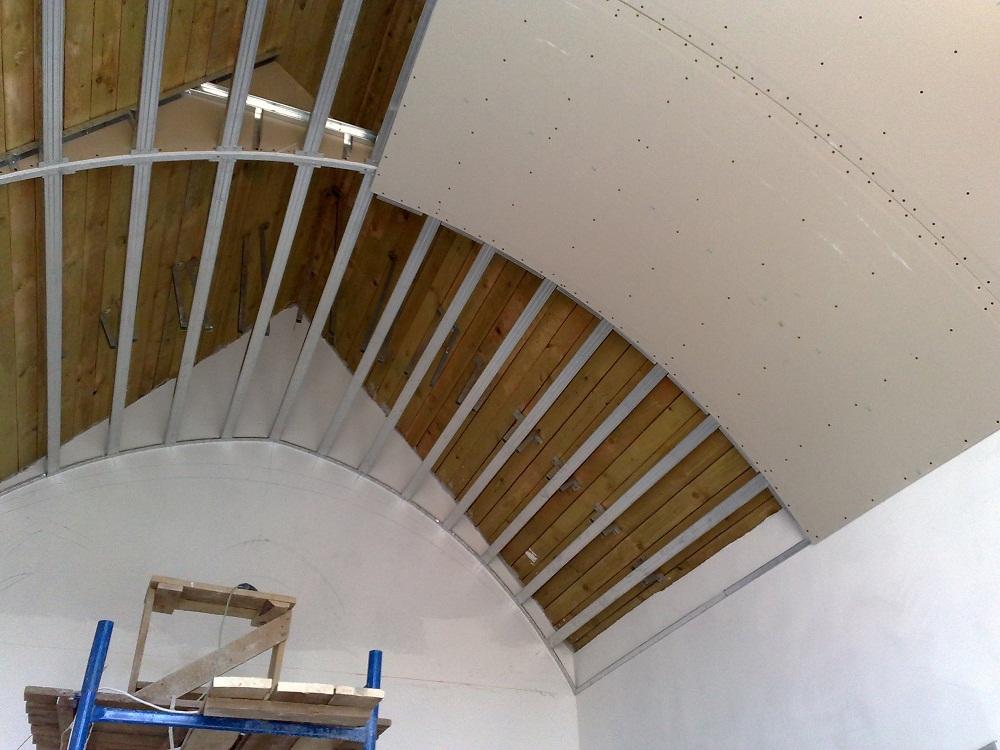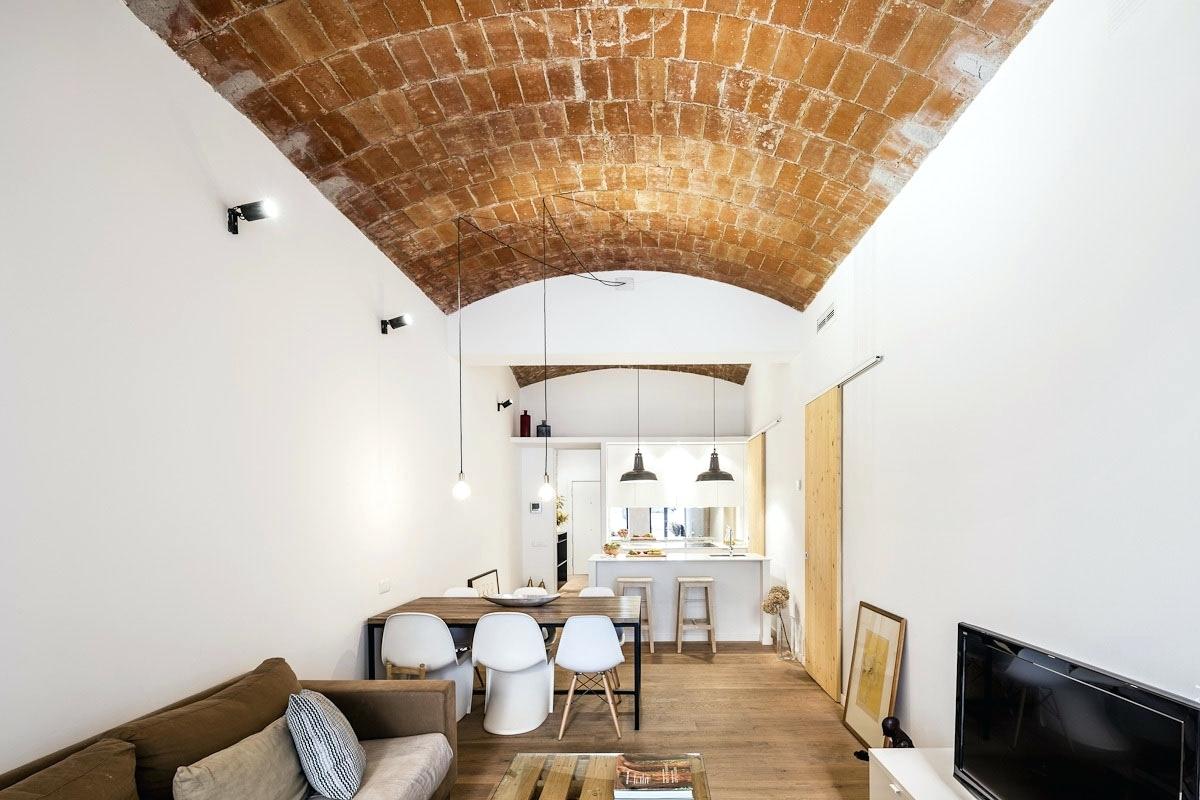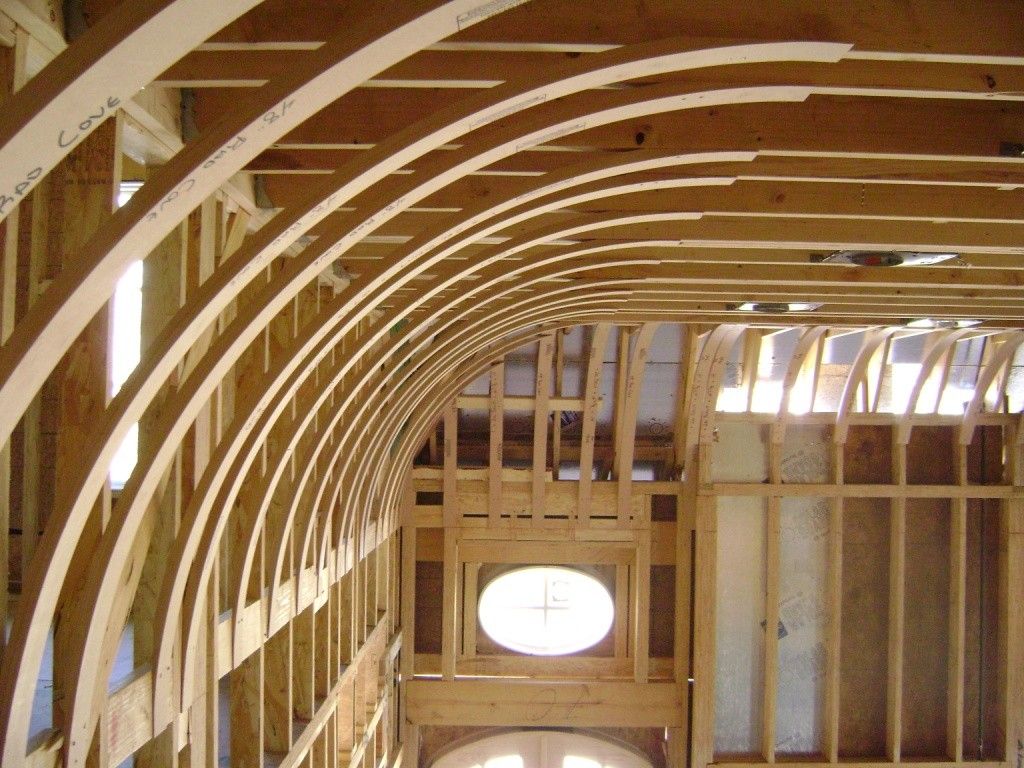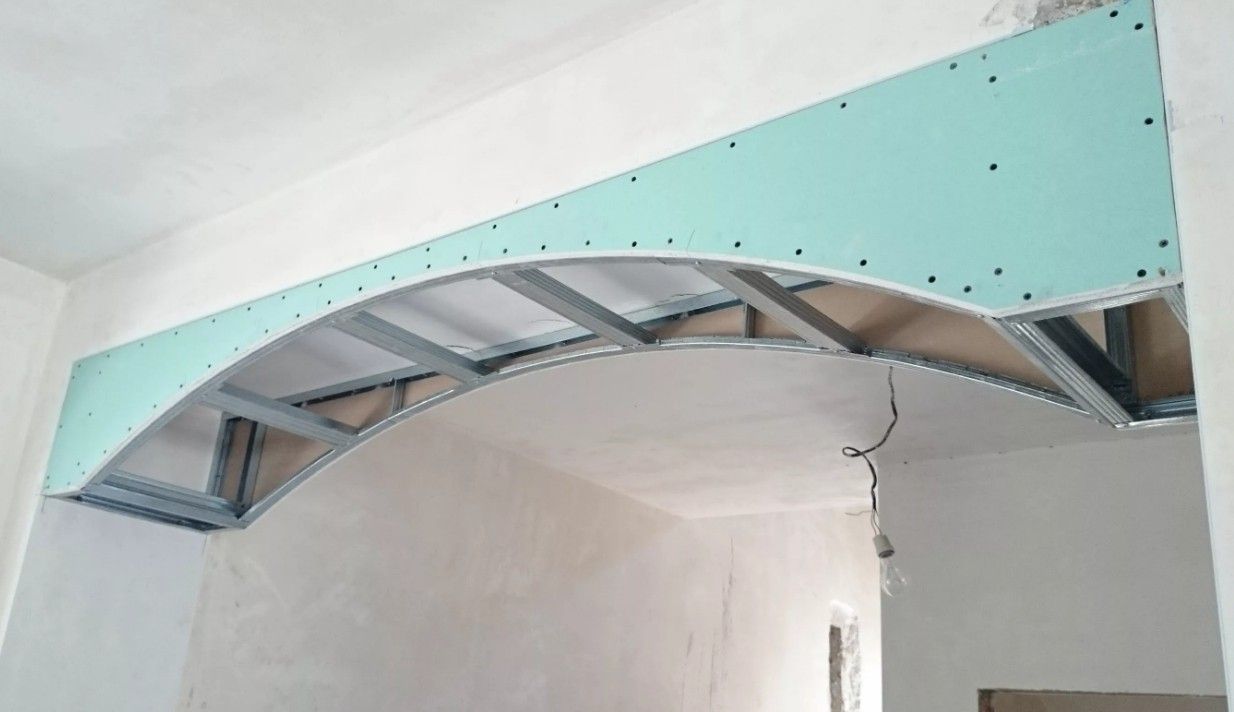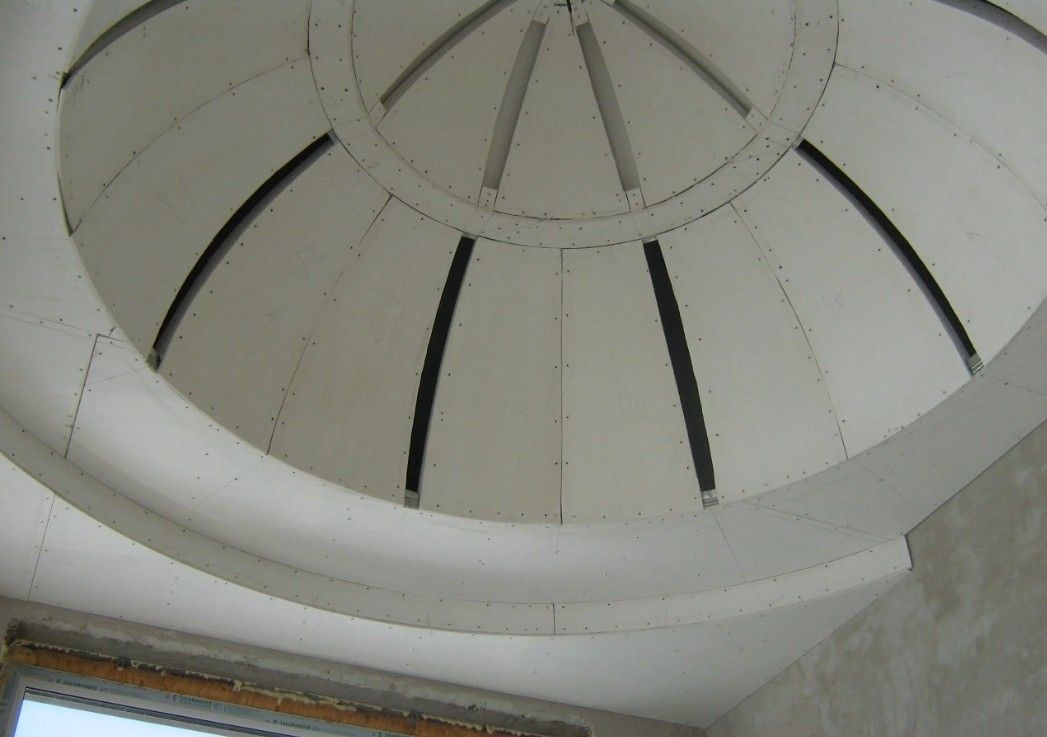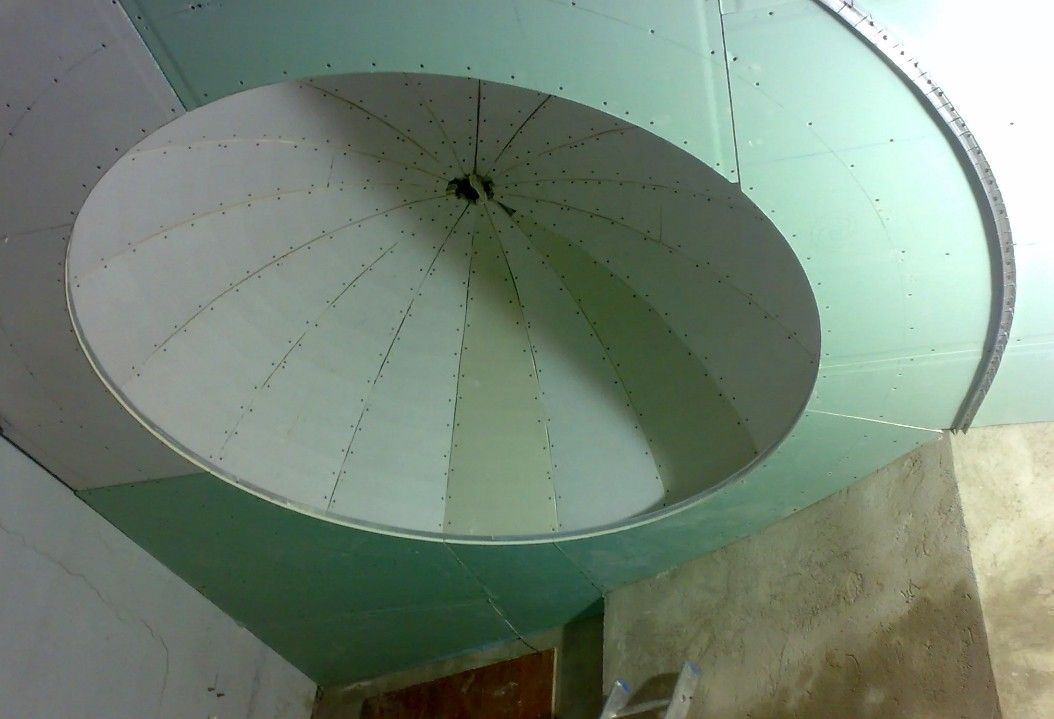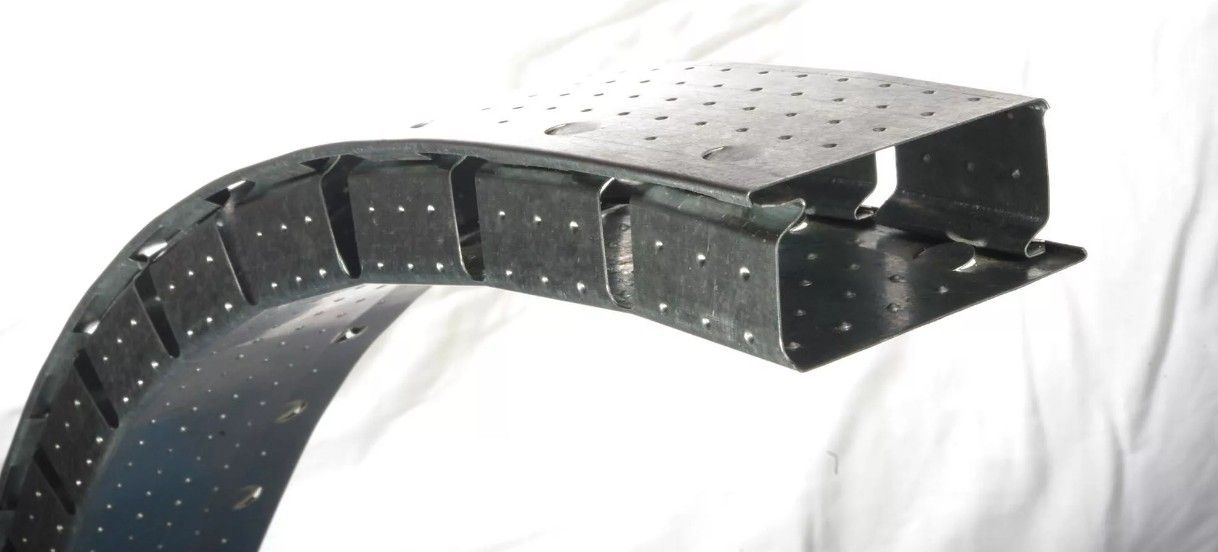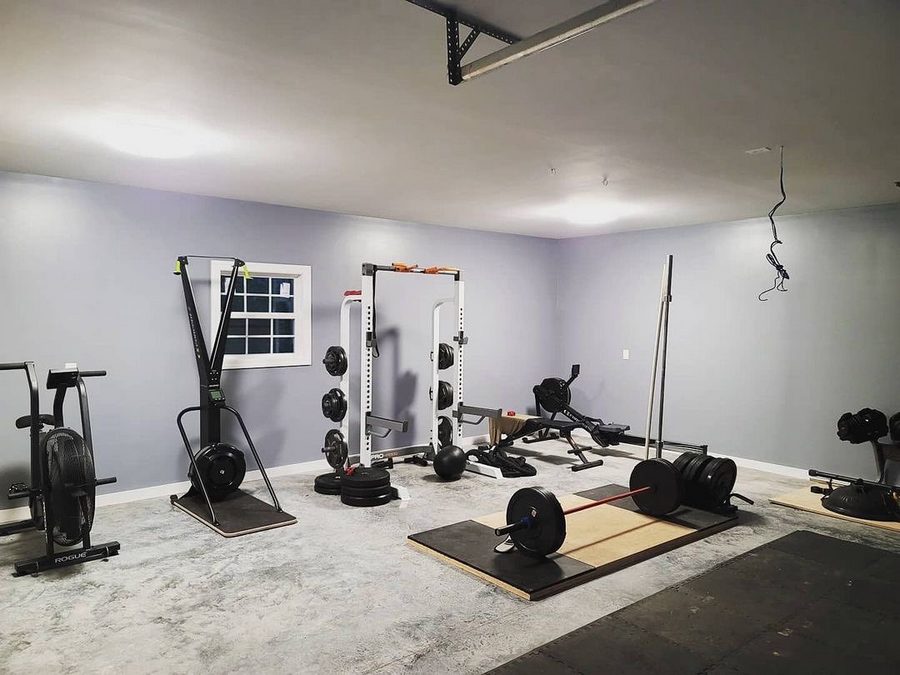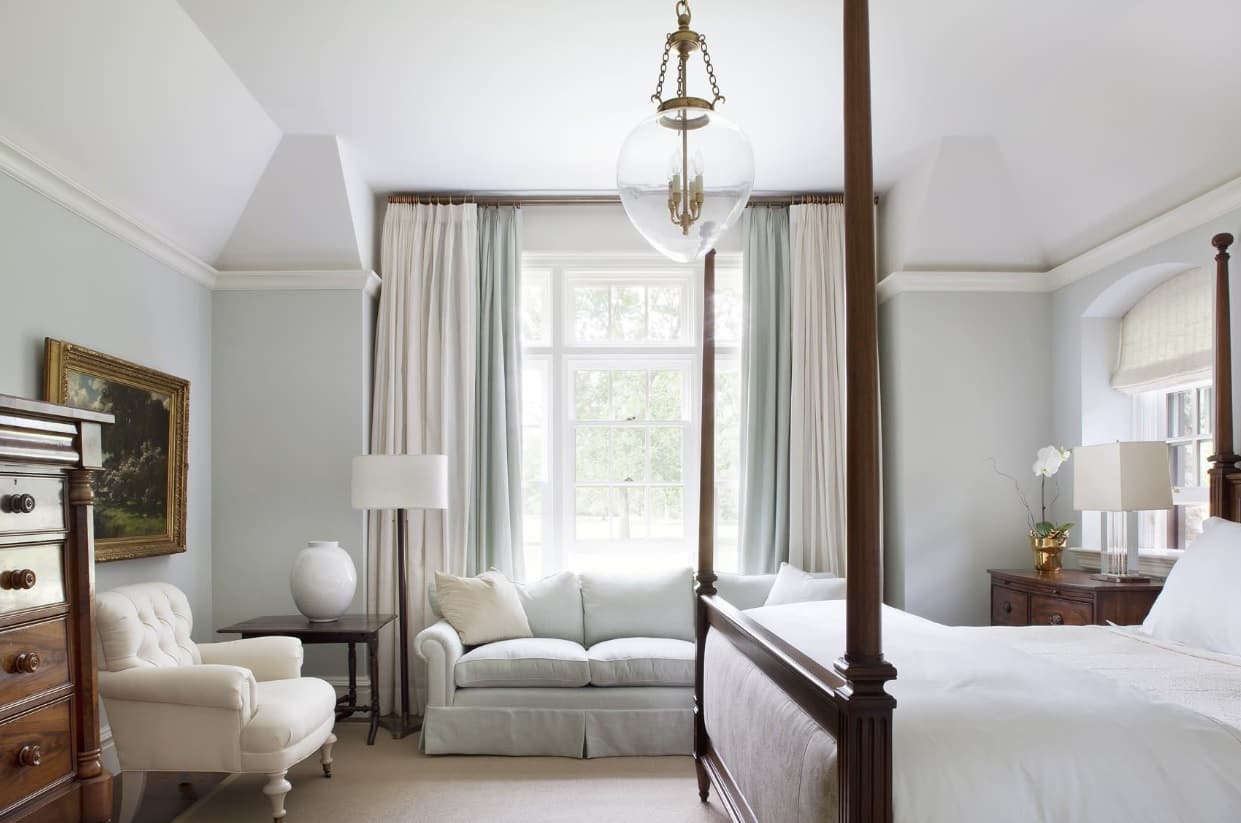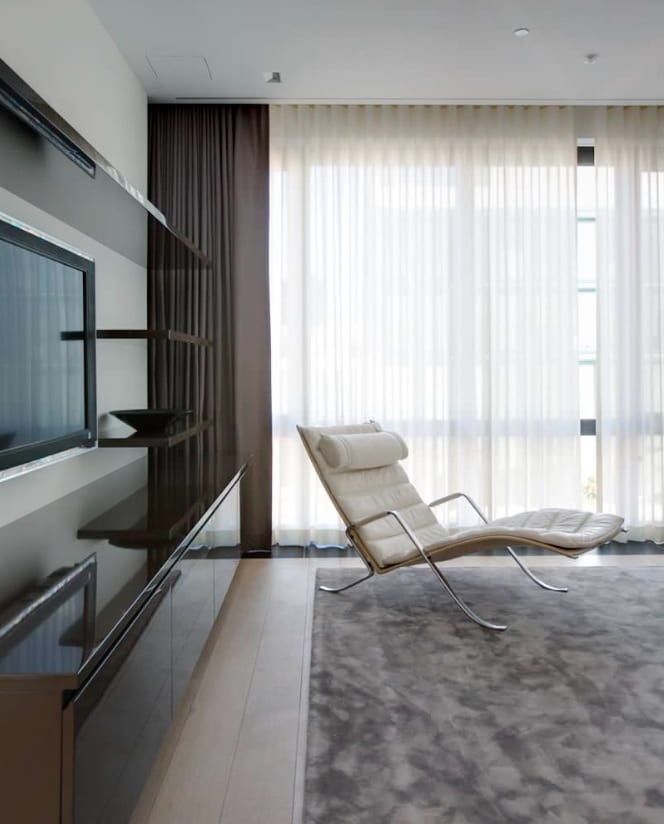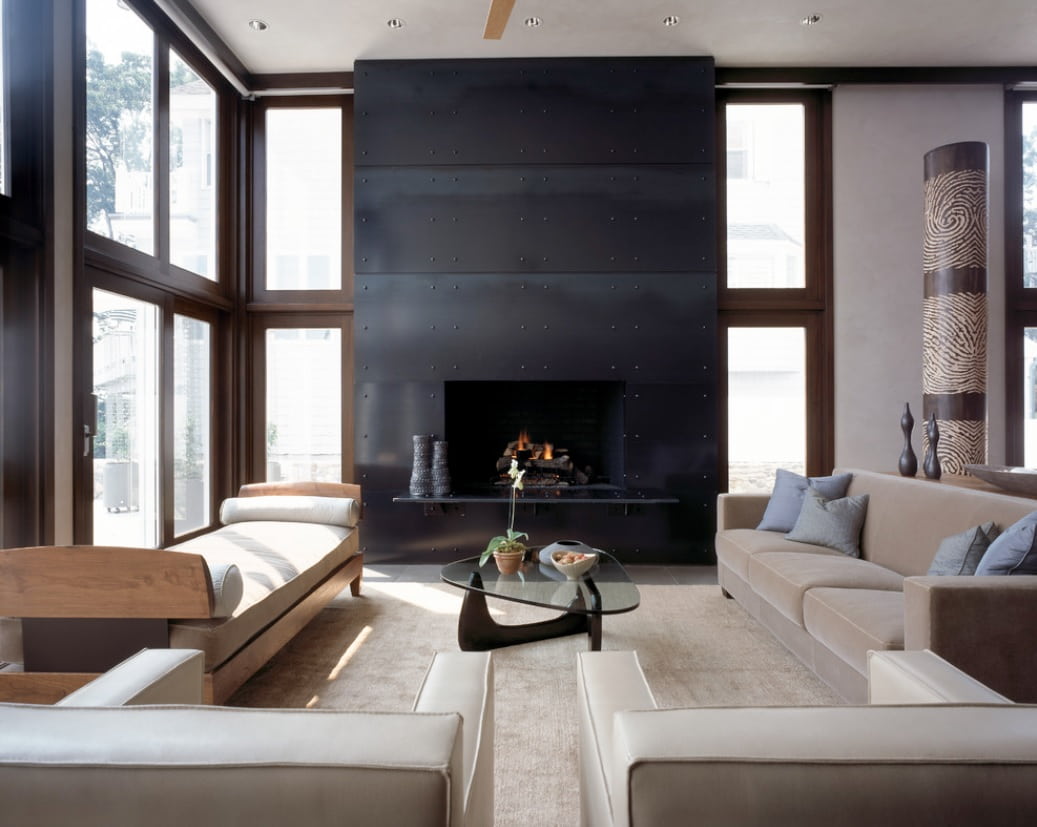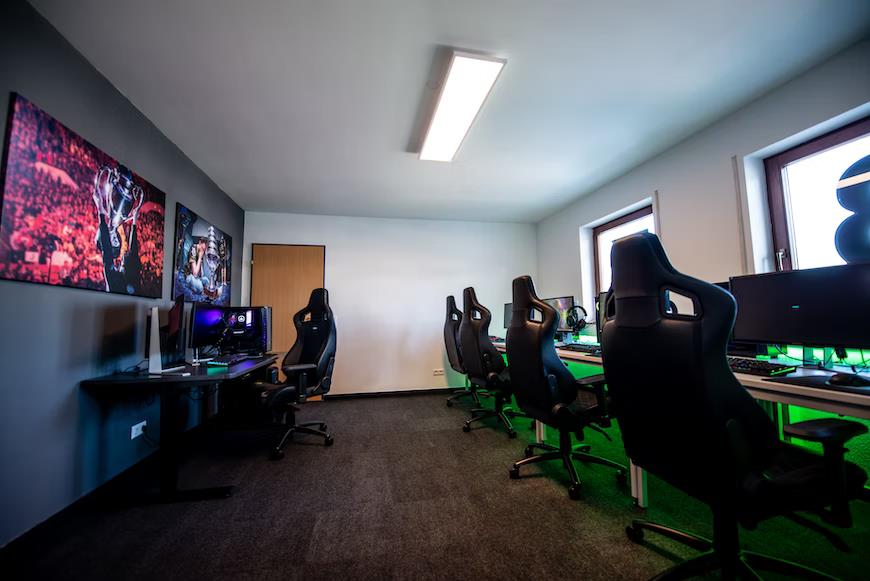Often, mostly the owners of private houses ask questions about the spherical configuration of ceilings. There are many nuances of the realization of the arch at your home. So, today we will explore vaulted ceiling: main principles of constructing and finishing, and we will try to acquaint you with the main ones.
Contents:
This publication tells about the constructions of arched ceilings. It also considered which ceiling is more reliable and durable – flat or vaulted. We will also provide some simple ways to change the geometry of the ceiling surface in order to create an interesting interior design.
Which One Is Stronger?
It is unlikely that you will believe the unequivocal statement: yes, the vaulted ceiling is more durable – after all, such a resume should be somehow justified. Therefore, to compare, you need to consider both options.
- We first consider the usual flat ceiling. As it can be seen from the picture above. This is a normal plane resting on the walls. The load from its mass is directed strictly down. In other words, such a ceiling is constantly under fracture risk.
- In order for such a ceiling to perform its functions, it must be sufficiently strengthened. The larger the floor space, the larger the spans and the more tough the ceiling should be.
- This design works well in relatively small rooms. Otherwise, due to the large spans, it is necessary to arrange the supporting structures.
- The larger the surface size, the more reinforcing material it requires. The ceiling becomes even heavier because of it, plus an additional load on the walls and the foundation of the room.
Many people probably saw powerful columns and ceiling beams in the buildings of large shopping centers and other similar objects. Their calculation and selection of structural materials are carried out so that the overlap is resistant to fracture.
Modern materials allow coping with this task. They are strong enough and light at the same time. But even in these cases, we can not do without additional supports.
Features of Vaulted Ceiling
Radius plate construction is called an arch. It differs from flat slabs in that this spatial structure works not in bending but in compression.
Spacer loads, depending on the building structure, are perceived by walls, frames, buttresses (protruding parts of the walls), or foundations if this is, for example, a wine cellar.
- Such ceilings were made by bricklayers from time immemorial, and vaulted ceilings were always considered the most durable. This is confirmed by the old buildings that have been preserved to our days, which have been serving for centuries and will stand as many more. No wonder that almost all historically established architecture is based on vaulted ceilings.
- There are at least six varieties of radial ceiling structures, as well as developed in 1943 version of the double curvature. It was used for the installation of coatings for industrial and large public buildings as the most durable type.
Note! All types of bricks, including hollow, natural and artificial stones (including blocks of lightweight concrete, of regular geometric shape can be used for the construction of curvilinear floors. Vaulted type surfaces allow you to cover a large area without installing columns.
- The only condition is that the walls should be stronger and well-fortified along the axis. It is for this purpose that protruding parts (buttresses) are provided for buildings. Look at any old building, and you will find such visible (or disguised by other structures) elements everywhere.
Have you ever wondered why ancient buildings, main churches, have such architectural designs as depicted in the photo? It is just because vaulted surfaces arranged in these buildings!
The desire to cover as much area as possible without the use of supporting columns in the center, as well as the lack of special materials and mechanisms for construction at that time, explains these architectural features.
Vaulted Ceiling: Main Principles of Constructing and Finishing. Vaulted Designs Today
Nowadays, when decorating interiors, designers also use vaulted ceilings. No, they do not build them with the obligatory erection of buttresses and arch buttresses – they are rather interior decorations. Such a time-consuming, complicated by configuration, and, importantly, expensive designs are rarely built today, at least in civil engineering.
Modern materials make it possible to arrange vaulted and arched ceilings in rooms, giving them unique design and comfort quickly, without spending much time and money. And it is impossible to simply arrange a vaulted ceiling in an already finished building without its complete alteration. But you can make a light and beautiful false roof.
Main Features of the Design
Why vaulted and arched forms are so attractive for people:
- The fact is that the lack of a sharp transition from the wall to the ceiling creates some blurring of visual perception.
- Due to this, the room acquires some lightness and its size increases visually.
- You may already have a question: is it possible to arrange such a structure at home and how to do it correctly?
- In fact, you can arrange a vaulted ceiling in your own house with your own hands.
One small nuance: for this, the height of the walls should be sufficient. If it is less than 3,2 m, then it is better not to experiment.
Bent Profile. Mounting Method
In one of our articles on ceilings, we described several ways how to bend drywall. Therefore, this issue should not cause problems.
- Of course, you will need to purchase a profile for the frame of the appropriate configuration, it is also called “bent”. For the rest, everything is pretty prosaic.
- The topmost point of the frame is mounted on the ceiling using conventional direct suspensions. The farther from the center and closer to the walls, the longer suspensions we will need.
- This issue is solved by the use of spring suspensions with wire. You have no curved profile and the height of the main ceiling is relatively small? You can make a vaulted or arched ceiling, using cut from 10 mm plywood elements of the future frame, tightly attached to the main surface instead of hangers and curved profiles.
- To do this, you will need to measure your room, and most importantly, pay attention to its size in the section. Strictly observing the scale, make the drawing of the room. Next, a diagram of the future ceiling is drawn. If everything suits you, you can get to work.
Here is what you can get in the end:
The result is something like this:
Beginning of the Installation
As you have already understood from the above photos, the framework for the roof, as in the case with the usual plasterboard ceiling, can be assembled from a metal profile or from wood. In the second case, elements of plywood or glued veneer are used on curvilinear sections, and regular bars are used on straight lines.
Our advice: prime all wooden parts with a primer before installation. The beam is fixed: the next stage is the fastening of a curved profile made of plywood.
- The best option would be when the radial element consists of two halves tightly fixed in the center. The step with which it will be attached throughout the room should be 600 mm.
- The first one is attached to the wall. Two holes for anchors are drilled in the place of the central joint.
- According to your calculation, it is necessary to drill holes at the ends of the wooden belt to the size of the anchors. Bending and fastening such a “profile” will not be difficult. Of course, you will need an assistant.
- The plywood element begins to bend immediately. Initially, it is fixed on the ceiling. After that, when bent to the desired radius, it is fixed on the timber.
- If the bend is small, then in the middle of the profile you will need to install a spring suspension. When the bend is quite steep, the suspension can be skipped. It’s only up to you.
- Thus all elements of a wooden profile are fixed. Again, the pitch should be 600 mm.
Important! Regardless of the size of the room, the last profile should be installed flush with the wall.
In the case of the dome form, there is only a longitudinal metal profile in the frame, there is no cross-section. Therefore, installing sheets of drywall, it is necessary to embroider the gypsum board with a painting knife in the place of the transverse joint. Subsequently, the joint is convenient to putty, and the jointing will not allow the seam to crack.
We have reviewed the nuances of the arranging of such original ceilings. Of course, someone may argue that it is rather not vaulted, but an arched structure. That’s right, but in both cases, the principles of the arranging are the same.
It is just a little more difficult to make a vaulted ceiling, but if you wish, it is completely possible for any person who owns the tool and wits. And most importantly – there should be a desire, diligence, and hard work.


